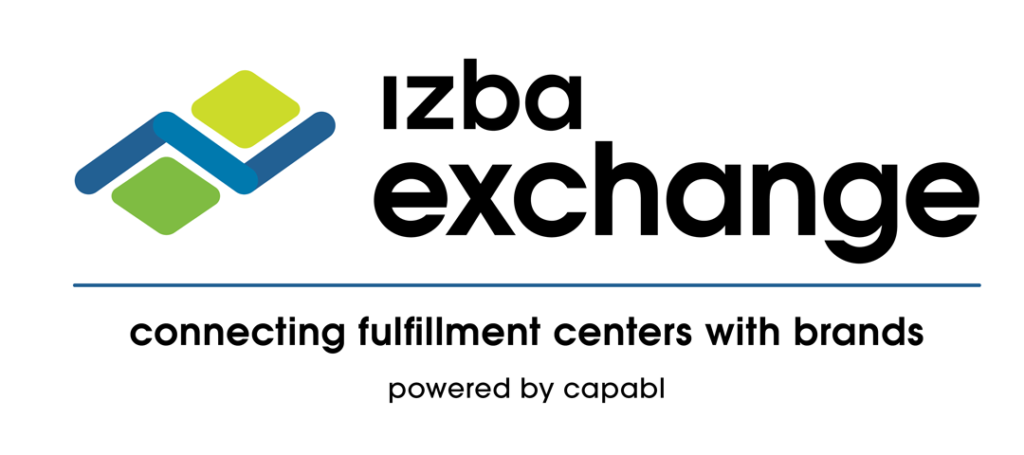
Izba’s Key Takeaways from Manifest 2025
This year’s Manifest conference reinforced what we’ve been seeing in the market—brands are evolving, and logistics is shifting to keep up. Here’s what stood out:
🔹 Fulfillment & Partnerships Matter More Than Ever
Fulfillment centers are hungry—not just to keep brands, but to find the right ones. Brands are actively testing new fulfillment options, leading to a surge in RFPs. 3PLs are focusing on partnerships that bring in the right business, not just volume.
🔹 The Shift in Sales Channels is Accelerating
The DTC boom is cooling, and brands are expanding into retail and B2B. Brick-and-mortar B2B is making a comeback, bringing new challenges—especially with returns.
🔹 Inventory & Returns Are in the Spotlight
Inventory planning is top of mind as brands navigate channel expansion. Returns remain a major pain point, and the packed tariff session signaled growing concerns over cost and compliance.
🔹 Tech is a Tool, Not a Buzzword
There’s growing fatigue around “AI washing”—companies want real solutions, not just hype. The good news? Many of those solutions are becoming more approachable and actionable.
One more thing: People really like Slotted.

9 Warning Signs That your Startup Is Struggling to Scale Effectively
-
Frequent Stockouts or Overstocking
-
Over-Reliance on Expensive Shipping Methods
-
Lack of Quality Control Process
-
Inefficient Kitting and Assembly
-
Reactive Problem Solving Instead of Proactive Planning
-
Operational Bottlenecks
-
Overwhelmed Team and High Employee Burnout
-
Poor Spending Decisions
-
Struggling to Transition from MOQ to Tiered Orders
Like what You See?

Really excited to announce that our friends at Parabola are launching a survey in preparation to publish The 2025 Tech Stack Report: How brands power their supply chains. Long story short: Tech stacks for supply chain and ops professionals are notoriously enigmatic and confusing. They want to tackle that challenge head-on in pursuit of demystifying the space and giving operators more clarity on what systems to use where, and why.
What We’re Reading
-
Trade War Updates: Get the latest updates on U.S. trade wars, including tariffs on multiple countries and how these changes affect your business operations. (Izba)
-
Small Warehouses Are Getting Harder to Find: Despite an overall increase in U.S. warehouse availability, businesses seeking smaller spaces under 100,000 square feet face a tight market, with vacancy rates at just 3.9%. Developers have prioritized larger facilities to meet e-commerce demands, leading to a shortage of small warehouses, especially in urban and suburban areas where land is scarce and expensive. (WSJ)
-
Trump Calls India a Tariff King, a Title Modi Wants to Shed: President Trump called India the “tariff king” due to its high import duties, prompting Prime Minister Modi to lower tariffs on select goods like smartphone components and EV battery materials to improve U.S. trade relations. However, these reductions may have limited impact on U.S. exports, and Modi seeks to prevent reciprocal tariffs that could further strain India’s economy. (WSJ)
-
Why Trump Is Closing a Trade Exemption for China: President Trump has suspended the de minimis trade exemption, which previously allowed Chinese e-commerce platforms like Shein and Temu to ship low-value goods to the U.S. without incurring tariffs or undergoing customs inspections. This move aims to close a loophole that facilitated a surge of duty-free imports from China, impacting domestic retailers and manufacturers. (WSJ)
Warehouse & Distribution: Post-Pandemic Trends & Outlooks

Business Worth Buying

We’re diving deep into the complexities of global trade and the implications of policy changes in our latest podcast episode.
Key Takeaways:
-
Impact of Trade Policies: Chris shares a thorough analysis of how Trump’s first term disrupted long-standing globalization trends and the lasting impact of tariffs. The discussion extends into how the Biden administration maintained many of these policies, emphasizing a persistent trend towards protectionism.
-
Global Trade Shifts: We uncover how the focus on China has evolved, with attention now shifting to other countries. Chris discusses the role of allies, protectionism, and the implications for longstanding U.S. allies.
-
Protectionism and Its Global Ripple Effect: Discover how rising protectionism isn’t just a U.S. phenomenon. We explore how other nations, like Japan and Korea, have long protected their industries, impacting global trade dynamics significantly.
-
Preparing for a Potential Second Trump Administration: The episode delves into what could come with a Trump second term regarding tax and customs policies, projected tariffs, and their impact on businesses across various sectors.
-
Supply Chain Reassessment: Chris and Aaron discuss the importance of supply chain visibility, emphasizing the necessity for companies to reassess their procurement strategies amidst changing geopolitical climates.
-
Building a Strategic Moat: Drawing from Google’s strategy as an example, Chris discusses building a business with a defensible moat that stands the test of time.
-
Entrepreneurial Insights: We close with insights for budding entrepreneurs about capital efficiency and strategically planning for long-term success and potential acquisitions.
Head over to your favorite podcast platform, subscribe to Build a Business Worth Buying, and start listening today!




